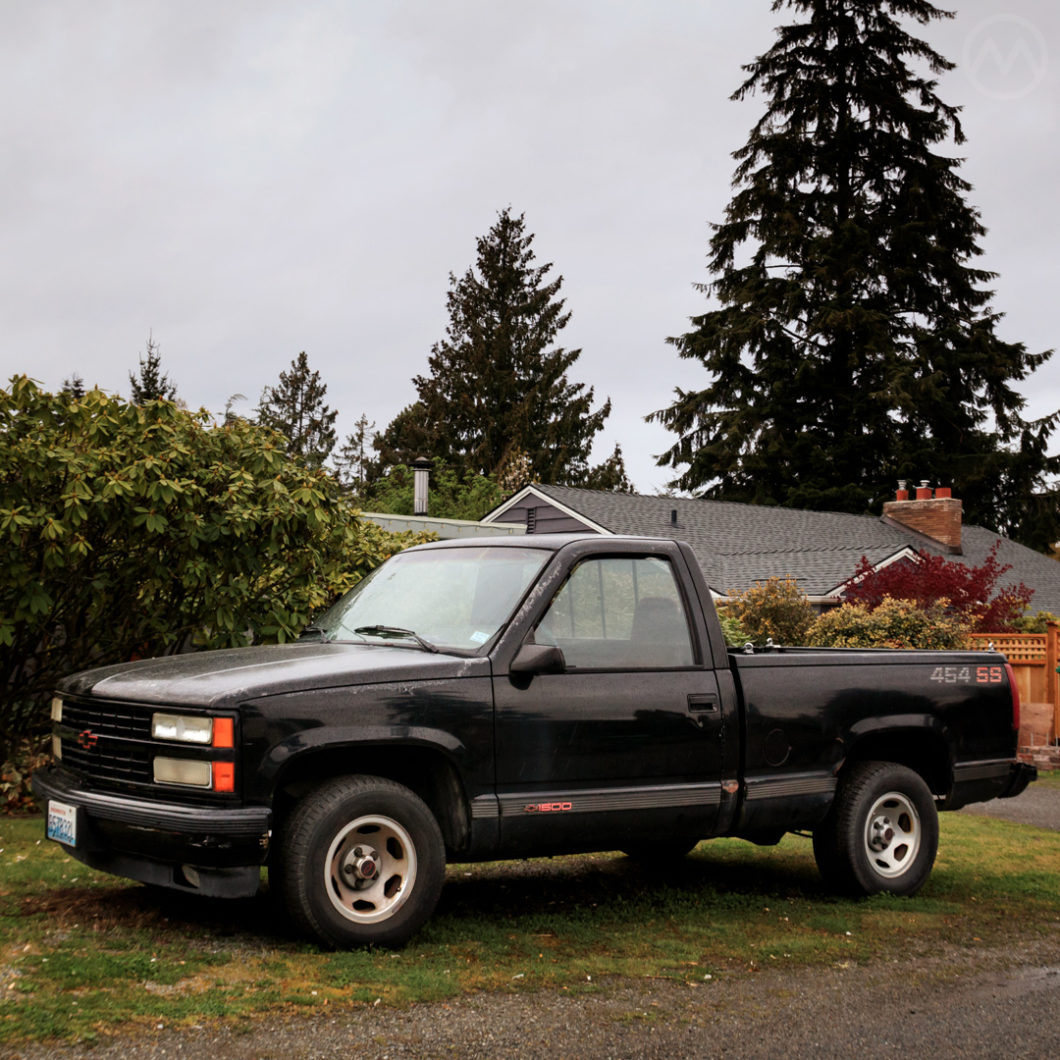Muscle pickups, briefly popular in the 1970s in the form of trucks like Dodge’s “L’il Red Express,” made a comeback in the early 1990s and the first manufacturer to really unleash them was GM. In 1990 and 1991, The General offered a very divergent pair of speedy pickups. The first was Chevrolet’s 454SS, based on the GMT400 C/K pickups. The second was GMC’s Syclone, based on the S-15/Sonoma. While the Cyclone used new thinking turbocharging to nip at the heels of the Ferrari 348, the 454SS hewed to the ancient cry of “There’s no replacement for displacement.”
An old-school bruiser that cost much less to buy, the 454SS outsold the faster, more exotic Syclone, hand help set the stage for Ford’s F-150 lightning. Today, however, the big Chevy isn’t as well remembered today as either of those wilder twists on this same idea.
The Muscle Truck Comeback
The second fuel crisis largely killed off factory muscle trucks for nearly a decade after Dodge’s “L’il Red Express” era But even so, GM produced a variety of special models based on the 1973-87 C/Ks that were aimed at the muscle truck market such as the Chevy Sport and the GMC Street Coupe – both of which were primarily offered in the late 1970s (the last Chevy Sports were ‘81s).
Custom “Square body” C/Ks were less frequently seen in the 1980s but were still offered into 1987, and many regular short-bed trucks were modified (sometimes very extensively) by their owners.
The 1970s specials could be had with the big 454, the last and largest of the Bowtie division’s formal big-block engines descended from the famous 409 and 427 V8s, although they were not de facto models. Most of the special custom trucks were just option packages and could therefore be ordered with almost the full range of Chevy’s truck engines, from humble straight sixes all the way up to the 454.
New in 1970, the 454 was designed for cars and trucks. It was an enlargement of the prior 427 with a longer stroke (4 inches to the 427’s 3.75), but because of incoming emissions and fuel regulations, it never quite reached the horsepower highs of its predecessor. Even so, it was offered in Chevrolet‘s cars until the end of 1975 (though after the first fuel crisis in 1973, it was infrequently chosen). After 1975, it became a truck-only engine, pushing out about 215 horsepower but still possessing ample torque.
With emissions regs for trucks largely stagnant and GM’s attention focused on developing cars and small trucks, the “Square Body” C/Ks lasted a long time, and the 454 remained more or less unchanged until the addition of fuel injection in 1987, which boosted it to 245 horsepower in stock form.
The GMT400 and the 454SS
The GMT400 trucks were a revelation when they were new. They looked, felt, and drove like the most modern pickups ever up to that time, with clean aerodynamic looks, a decent ride and a work-friendly cabin. They took most of the 1980s to design and engineer, but they were a massive success when they finally went on sale. GM moved more than half a million units a year in 1988-89, early teething problems with suspension components aside.
The huge array of GMT400 configurations also made it possible to engineer a muscle truck on the cheap – thus the 454SS was an easy way to test the waters on a factory sport truck.
Whereas most of the 1980s specials had been modified by outside contractors such as Choo Choo Customs in Tennessee, the 454SS would come from the factory. Choo Choo and others continued to build modified trucks well into the 1990s, but the 454SS would be a truck you could just order off the showroom floor, and it was subtly menacing rather than festooned in high-vis graphics like the older specials.
The recipe was a short-box C1500, Bilstein shocks and heftier suspension components, quicker steering, big fat street tires (this was before the advent of massive 20” wheels), and of course – a 230-hp, 385 lbs./ft. 454 V8. The truck came dressed only in Darth Vader black with graphics that perfectly fit with Chevy’s look of the time – it would have looked perfectly at home alongside Dale Earnhardt’s Winston Cup Lumina.
The engine and overall speed are uninspiring by today’s standards – It’d do 60 in 7.7 seconds and sucked down fuel at 11mpg — but the 454SS looked the part. Unlike the Syclone, which had a 500-pound max load capacity, the 454SS was also actually useful as an actual truck, with ratings and capabilities similar to any short-bed C/K GMT400.
The 454 was quite popular in 1990 – over 13K were sold, and Chevrolet improved it in 1991. That year, the V8 was upped 255 horsepower and 410 pound-feet of torque and twin 2.5-inch catalytic converters. There were also internal changes to the long-lived “L19” 454, including four-bolt main bearings, structural updates to the block, aluminum valve covers and a repositioned oil galley, the most attention this engine had gotten in over a decade.
Chevy made the truck a limited edition for the next three years, and just under 17K overall were made. The 454SS faded fairly quickly from the limelight, likely because it was not as fast or exotic as the Syclone – although that truck was offered for a far shorter period of time and sold in tiny numbers. Ford’s F-150 Lightning, which debuted in 1992 as a response to the 454SS, also got more attention and accolades for it’s outstanding handling and better weight balance, even if the engine was much smaller (just a modified 351 Windsor V8), which stole the Chevy’s thunder.
It’s an odd combination of the very modern-seeming GMT400, which looked and felt futuristic in 1988, and a very old-school approach to making a fast vehicle (take the biggest engine you can find and shove it into the smallest chassis), but it definitely paved the way for more trucks like it.
Note: This story was first published on July 30, 2019, but has recently been updated.

